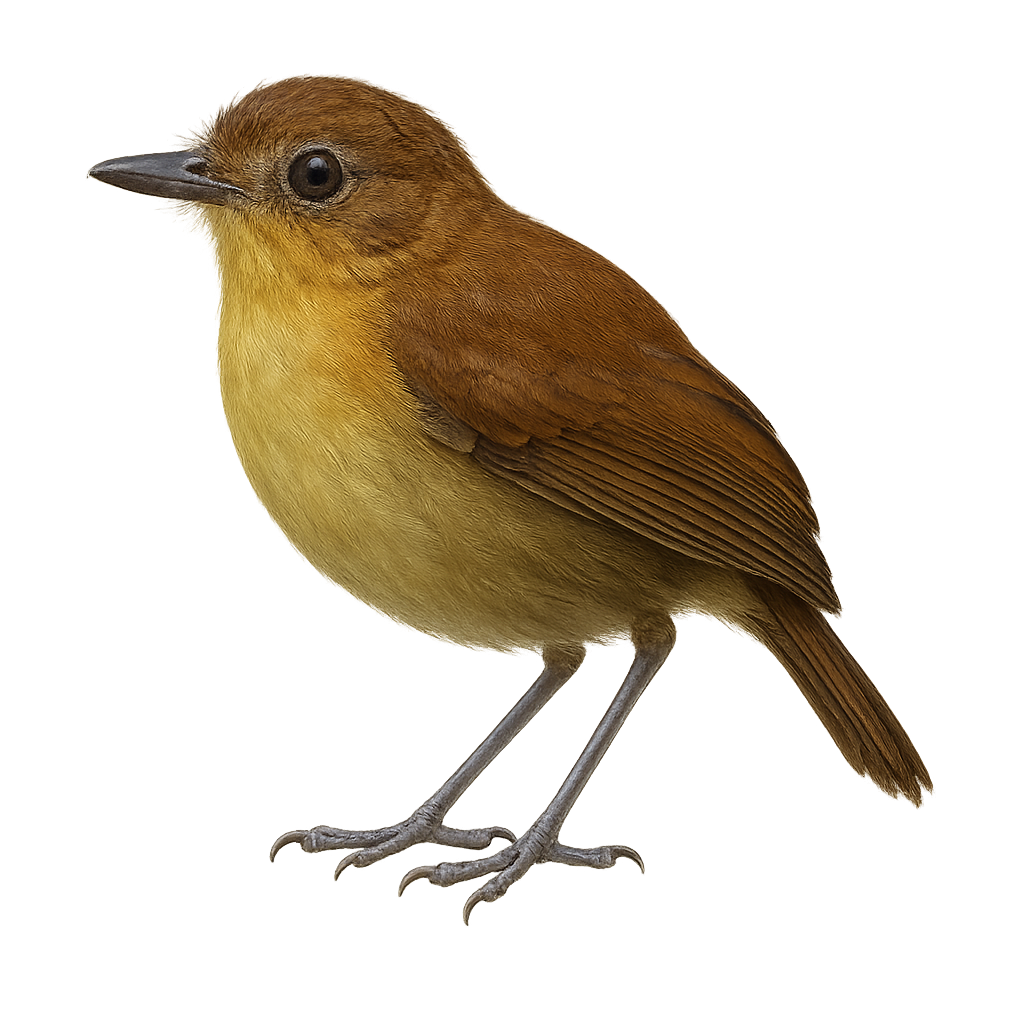Your wildlife photography guide.
Explore the yellow-breasted antpitta in detail, study its behavior, prepare your shots.
Where to observe and photograph the yellow-breasted antpitta in the wild
Learn where and when to spot the yellow-breasted antpitta in the wild, how to identify the species based on distinctive features, and what natural environments it inhabits. The WildlifePhotographer app offers tailored photography tips that reflect the yellow-breasted antpitta’s behavior, helping you capture better wildlife images. Explore the full species profile for key information including description, habitat, active periods, and approach techniques.
Yellow-breasted Antpitta
Scientific name: Grallaria flavotincta

IUCN Status: Near Threatened
Family: GRALLARIIDAE
Group: Birds
Sensitivity to human approach: Suspicious
Minimum approach distance: 10 m
Courtship display: September to October
Incubation: 18-20 jours
Hatchings: September to November
Habitat:
Humid forests, dense undergrowth, mountainous areas
Activity period :
Primarily active during the day, with peak activity in the morning and late afternoon.
Identification and description:
The Yellow-breasted Antpitta is a discreet and fascinating bird belonging to the Grallariidae family. It is primarily found in the humid forests of the Andes, often hiding in dense vegetation. Its plumage is characterized by a tawny hue on the breast, contrasting with an olive-brown back. This bird is known for its melodious song, often heard before being seen. It primarily feeds on insects and other small invertebrates found by foraging on the forest floor. The Yellow-breasted Antpitta is a solitary bird, rarely seen in groups. Its shy nature and difficult-to-access habitat make it a challenge for birdwatchers.
Recommended lens:
400 mm – adjust based on distance, desired framing (portrait or habitat), and approach conditions.
Photography tips:
To photograph the Yellow-breasted Antpitta, it is advisable to use a telephoto lens of at least 400mm to capture detailed images without disturbing the bird. Look for areas where its song is audible, as it is often easier to hear than to see. Be patient and remain still to increase your chances of observation. The best times for photography are early morning or late afternoon when activity is at its peak. Use a tripod to stabilize your camera in the low-light conditions of the undergrowth.
The WildlifePhotographer App is coming soon!
Be the first to explore the best nature spots, track rutting seasons, log your observations, and observe more wildlife.
Already 1 430 wildlife lovers subscribed worldwide

